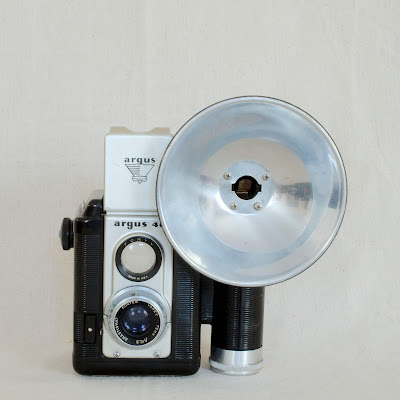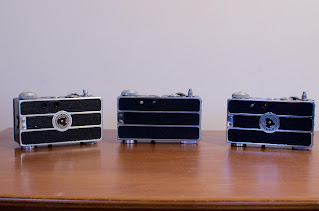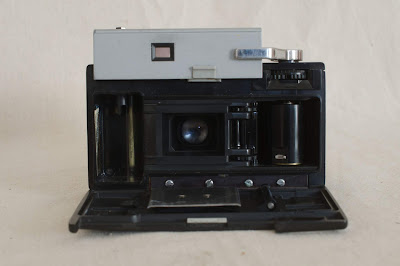Front
Back
The exposure meter has a strip of graduated filter material. To use the exposure meter the photographer holds the camera at arm's length and points it at the scene, then takes a quick look at the meter to see the darkest spot that still shows a little light. By setting the calculator for the film speed, general light conditions and the light visible in the meter, the photographer can calculate the shutter speed and aperture setting almost as accurately as by simply guessing. The film speeds are Weston exposure index numbers instead of ASA numbers. The Weston numbers were determined by film tests made by the Weston Electrical Instrument Company, who manufactured photoelectric exposure meters, and were about 80% of the corresponding ASA film speed. For example, a film with an ASA speed of 100 had a Weston speed of 80.
The post war version of the A2B was outdated when it appeared, but it was inexpensive, it worked and it was available.
[Update] Here is an example of the pre-war A2B (1939-1942). The trim and shutter are slightly different from the post-war version and the lens is uncoated. The shutter release is a plunger that can be unscrewed for a cable release. The plunger often is lost. Argus had a special cable release for the A2B because a standard cable release with a narrow pin can get hung in the shutter mechanism and damage it. The Argus cable release had a wide plunger that would not damage the shutter. The shutter speeds on the pre-war version were marked 1/25, 1/50, 1/100 and 1/200 plus B and T. The exposure calculator had matching shutter speeds.
Pre-war A2B
Pre-war A2B
[Update] The pre-war A2B was missing the film advance catch, which I've replaced with one from an Argus A that had a bad shutter.




























